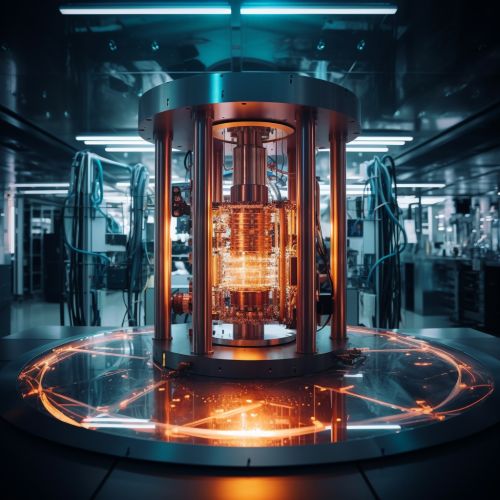Advances in Quantum Error Correction Codes
Introduction
Quantum error correction (QEC) is a crucial aspect of quantum computing, which aims to protect quantum information from errors due to decoherence and other quantum noise. Quantum error correction is essential for the practical realization of large-scale quantum computers. This article delves into the advances made in the field of quantum error correction codes, discussing the various types of codes and their applications.


Quantum Errors
In the realm of quantum computing, errors can be introduced through various means such as decoherence, which is the loss of information from a system to the environment, and quantum noise. These errors pose a significant challenge to the development of quantum computers, necessitating the need for quantum error correction codes.
Quantum Error Correction Codes
Quantum error correction codes are mathematical tools used to correct errors in quantum information. They are designed to protect quantum states against errors in quantum computation and quantum communication. The development of these codes has been a significant milestone in the field of quantum computing.
Shor's Code
One of the earliest quantum error correction codes was Shor's code, developed by Peter Shor in 1995. Shor's code is a nine-qubit code that can correct arbitrary single-qubit errors. This code laid the foundation for the development of more complex and efficient quantum error correction codes.
Steane Code
Following Shor's code, Andrew Steane developed the Steane code, a seven-qubit code that can also correct arbitrary single-qubit errors. The Steane code is notable for its use of the quantum Fourier transform in the error correction process.
Calderbank-Shor-Steane Codes
The Calderbank-Shor-Steane (CSS) codes, developed by A.R. Calderbank, Peter Shor, and Andrew Steane, are a class of quantum error correction codes that combine classical error correction codes with Shor's and Steane's codes. CSS codes have been instrumental in the development of fault-tolerant quantum computing.
Topological Codes
Topological codes, such as the Kitaev's toric code and the surface code, are a class of quantum error correction codes that use the topology of the quantum state to protect against errors. These codes have gained popularity due to their high error threshold and the ability to perform fault-tolerant quantum computation.
Applications of Quantum Error Correction Codes
Quantum error correction codes have a wide range of applications in the field of quantum computing and quantum communication. They are essential for the realization of fault-tolerant quantum computers and the development of secure quantum communication protocols.
Future Directions
The field of quantum error correction codes continues to evolve, with ongoing research focusing on the development of more efficient codes, the improvement of error thresholds, and the exploration of new applications. The advances in this field will play a crucial role in the practical realization of quantum technologies.
